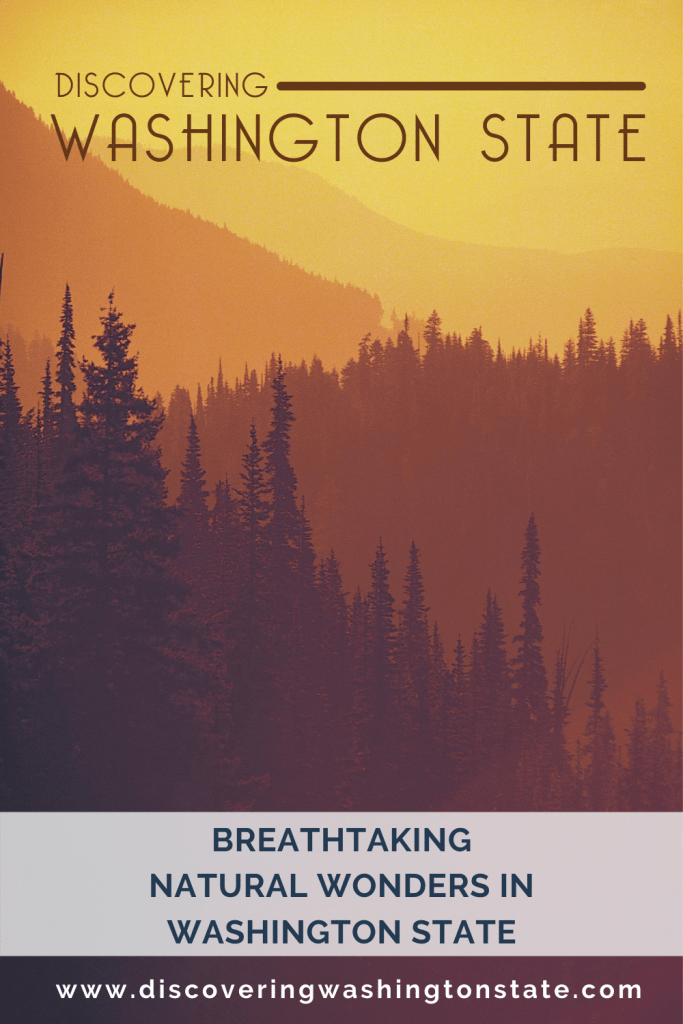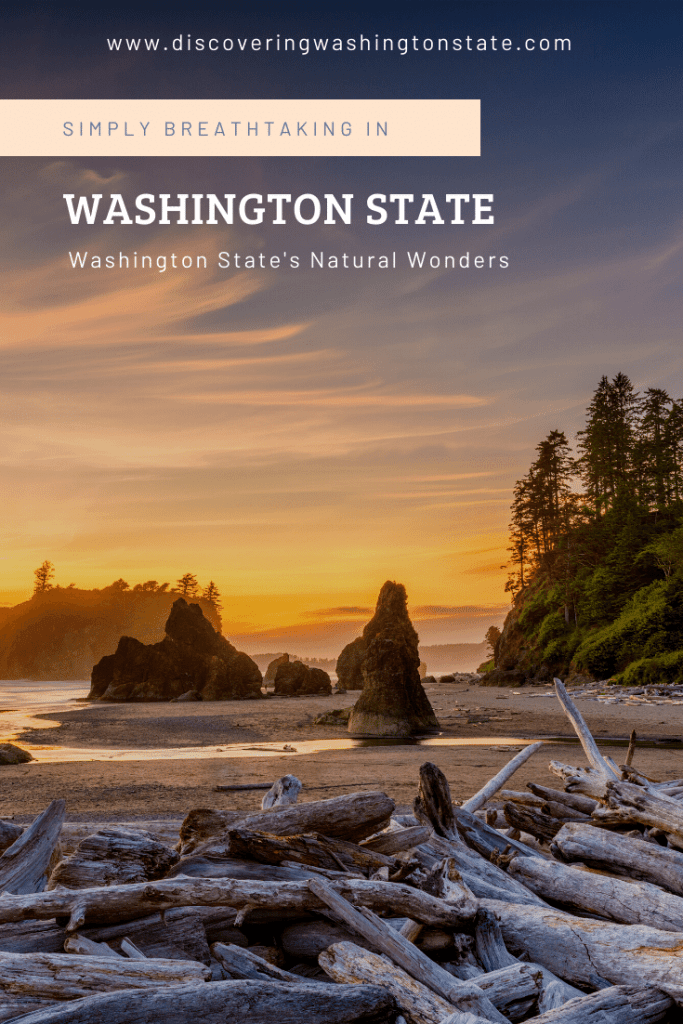Have you ever been out for a drive and turned a corner to discover unimaginable beauty? Have you planned your road trips around the unique sights you’ll find along the way? If so, the breathtaking natural wonders in Washington state might be perfect for you.
Not sure where to start? Here are five incredible destinations to help you get started!
Blue Lake Rhino Cave
South of Dry Falls in the North Cascades, you’ll find Blue Lake, home to a highly unusual cave. While many natural sites, such as the Three Sisters volcanic mountain peaks of Oregon, are named for resembling other things, the Blue Lake Rhino Cave’s moniker is quite literal — it’s actually a fossil!
That’s right — not all fossils are bones. In this case, it’s almost like a footprint that serves as a preserved trace of a life form from yesteryear. Evidence suggests that, 15 million years ago, a volcanic eruption caused lava to hit an unsuspecting rhino that happened to be soaking in a lake or shallow river. As a result, a layer of rock surrounded its body, leaving a distinct outline.
Although a bit of a sad tale, visiting Blue Lake Rhino Cave is definitely worth the relatively easy hike if you’re in the area. It’s not every day that you’ll encounter a cave shaped like a rhino, making this one of the most unique natural wonders in Washington state!
Where to Find It: To get to Blue Lake in the North Cascades from Winthrop (east), drive 31.3 miles on HWY 20 and look for the trailhead on the left just past Washington Pass Overlook. From the west, leave Newhalem and drive 42.1 miles on HWY 20 and you’ll find the trailhead on your right.
The Ape Caves
On the south side of Mount St. Helens, you’ll discover an incredible site that’s more than 2,000 years old. After lava streamed down the mountainside, the longest continuous lava tube in the continental United States was formed. How big is it? The formation, known as the Ape Caves, covers a remarkable two and a half miles!
Unlike the Rhino Cave, this natural wonder does not get its name from an animal (or Bigfoot, as some have believed) — it was discovered in the ’50s by a group who called themselves the Mount St. Helens Apes. While the passages and crawlways are dark and narrow, you’ll also find cathedral-like skylight openings!
Where to Find It: The Ape Caves are within Gifford Pinchot National Forest in Skamania, Washington. Head east on Forest Road 90 from Cougar, continuing just one mile beyond the Swift Dam. Turn left onto Forest Road 83, continue two miles and then turn left onto Forest Road 8303. Drive one mile and you’ll spot the trailhead on your right.
Tree Graveyard
For something a little more haunting, make the trek out to the mouth of the Quillayute River in La Push. On the shores of Rialto Beach, the tree graveyard is an eerie site. Uprooted by storms and bleached by the sun, the fallen trees almost look otherworldly against the dark sand — especially when a thick, white fog hangs overhead.
Of course, fans of Stephanie Meyer’s Twilight series will recognize the area as the home of Jacob Black, a fictional character who belonged to the real-life Quileute tribe that calls the Olympic Peninsula home. According to folklore, the Quileutes are descended from wolves, which only adds to the mystique. If you’re a fan of spooky things, this is a must-see stop on your Washington state road trip!
Where to find it: Rialto Beach is a 20-minute drive from Forks, Washington on WA-101. Use Mora Road to reach the waterfront and Tree Graveyard.
Hall of Mosses
You’ll feel just like you’ve stepped into a storybook as you stroll through the Hall of Mosses. It really is something you have to see (and feel) to believe! The old and majestic trees along the trail are covered in green and brown mosses, giving the path an ethereal feeling.
As if that isn’t magical enough, if you walk along the main trail you’ll encounter a grove of maple trees adorned with hanging moss. If fairies and mythical creatures exist, they’d probably want to live in the Hall of Mosses – so keep your eyes peeled!
Where to find it: Located in the Hoh Rainforest, the Hall of Mosses is a 45-minute drive from Forks and a two-hour drive from Port Angeles. It’s on the west side of the Olympic National Park which can be accessed from the Upper Hoh Road off of Highway 101.
Note: You’ll need an Olympic National Park or a federal America the Beautiful pass to enter the area.
Quinault Rainforest
We often associate rainforests with tropical climates, but did you know you can find some right here in the United States? One captivating example is the Quinault Rain Forest, which is part of the Olympic National Forest and Olympic National Park.
Head to the Valley of the Rain Forest Giants and you’ll be entranced by the variety of towering trees including Sitka Spruce, Western Red Cedar, and Mountain Hemlock. The forest, found in a valley formed by Lake Quinault and the Quinault River, sees an average of 12 feet of rain annually, creating a lush landscape.
Where to find it: Quinault is a one-hour drive from Forks and a three-hour drive from Port Angeles. Head to the southwestern part of Olympic National Park. Take the scenic loop or walk the Quinault Rain Forest Trailhead which can be found on the right side of South Shore Road.
There’s More
It’s easy enough to hop in your car, drive around the Evergreen State, and be amazed, but with some effort, there are some remarkable natural wonders to discover in Washington State. While some of the sights require a little bit of a hike for an up-close-and-personal experience, there are also many delightful scenic routes to enjoy without ever leaving your vehicle.
While these five destinations are a great place to start, there’s so much more to explore in Washington State; the Pacific Northwest has so much to offer. Pack a lunch, take a drive, and get lost in nature. You won’t soon forget it.
Save to Pinterest and schedule some natural beauty into your time in Washington State.


